Buccal fat extraction has emerged as one of the most popular facial contouring procedures, offering dramatic cheekbone enhancement and facial slimming. This guide explores every aspect of buccal fat removal, from surgical techniques to recovery timelines, cost considerations, and long-term results. Whether you’re considering the procedure or simply curious about this trending cosmetic surgery, this article provides evidence-based information to help you make an informed decision.
✓ Understanding Buccal Fat Anatomy: Learn about the buccal fat pad’s structure and function
✓ Procedure Details: Step-by-step explanation of surgical techniques and anesthesia options
✓ Risk Assessment: Comprehensive analysis of potential complications and safety considerations
✓ Cost Factors: Breakdown of pricing variables and financial planning strategies
✓ Recovery Timeline: Detailed post-operative care instructions and healing stages
✓ Results Timeline: Realistic expectations for short-term and long-term outcomes
✓ Alternative Options: Comparison with non-surgical facial slimming treatments
Facial Contouring Cost Estimator
Calculate the estimated cost for your facial contouring procedure based on your specific needs and medical profile
Read More Guides & Try More Free Tools:
- Try our Stomach Tuck: Procedure & Recovery Timeline
- Try our Lip Fillers Job: Cost, Side Effects & Recovery Time
- Try our Surgical Cosmetic: Procedures VS Non-Surgical

Table Of Contents
What Is Buccal Fat Extraction and How Does It Transform Facial Contours?
Buccal fat extraction, commonly known as buccal fat removal, is a surgical procedure designed to reduce fullness in the lower cheeks by removing portions of the buccal fat pads. These specialized fat compartments are located deep within the cheek area, between facial muscles, and contribute significantly to facial shape and roundness. The procedure specifically targets the buccal fat pad located in the hollow area below the cheekbones, which when reduced, creates enhanced facial definition and a more sculpted appearance.
The buccal fat pad serves important functions in infants for sucking, but in adults, its size varies significantly between individuals and can create a round or chubby facial appearance regardless of overall body weight. The surgical removal of this fat pad creates permanent changes to facial architecture, emphasizing the underlying bone structure and creating more angular, defined cheek contours.
Key facts about buccal fat anatomy:
✓ The buccal fat pad consists of a main body and four extensions
✓ It occupies the space between the buccinator muscle and masseter muscle
✓ Size varies genetically and is not necessarily related to overall body fat percentage
✓ The pad diminishes naturally with age, which impacts long-term surgical planning
✓ Complete removal is generally avoided to prevent unnatural hollowing
Who Is the Ideal Candidate for Buccal Fat Removal Surgery?
Ideal candidates for buccal fat extraction possess specific anatomical and physiological characteristics that predict successful outcomes. The procedure works best for individuals with genetically full, rounded cheeks who desire more prominent cheekbones and facial definition. Appropriate candidates typically have good skin elasticity, are at or near their ideal body weight, and have realistic expectations about the results.
The most suitable candidates generally fall between their late teens to late 30s, as older patients may experience natural volume loss that could be exacerbated by buccal fat removal. A thorough evaluation by a qualified plastic surgeon should assess facial bone structure, skin quality, and overall facial proportions to determine if buccal fat removal will create harmonious results.
Characteristics of ideal candidates include:
✓ Round or square face shape with full lower cheeks
✓ Good skin elasticity and collagen production
✓ Stable weight within healthy BMI range
✓ No significant history of weight fluctuations
✓ Well-defined jawline that will be enhanced by cheek definition
✓ Realistic expectations about the degree of change
✓ Non-smokers or willing to quit before and after surgery
✓ No contraindications for oral surgery or anesthesia
How Does Buccal Fat Removal Surgery Work? A Step-by-Step Guide
The buccal fat extraction procedure follows a systematic approach that begins with preoperative planning and concludes with precise surgical execution. The surgery typically takes 30-60 minutes per side and is performed through incisions inside the mouth, eliminating external scarring. Understanding the surgical process helps patients prepare mentally and physically for the experience.
The procedure starts with detailed markings while the patient is seated upright to account for gravitational effects on facial tissues. Local anesthesia with sedation or general anesthesia ensures comfort throughout the surgery. The surgeon makes small incisions (approximately 2-3 cm) inside the mouth, opposite the upper molars, carefully avoiding the parotid duct and facial nerves.
Surgical steps explained:
✓ Anesthesia administration: Local with sedation or general anesthesia based on patient and surgeon preference
✓ Incision placement: Precise incisions made inside the cheek mucosa
✓ Tissue dissection: careful separation through the buccinator muscle to access the buccal fat pad
✓ Fat pad exposure: The encapsulated fat pad is gently delivered through the incision
✓ Partial resection: A conservative amount of fat is removed, typically 2-5 ml per side
✓ Hemostasis: Meticulous bleeding control to prevent hematoma formation
✓ Closure: Absorbable sutures close the mucosal incisions
✓ Recovery monitoring: Initial observation before discharge
What Are the Different Surgical Techniques for Buccal Fat Extraction?
Buccal fat removal techniques vary based on surgical approach, instrumentation, and the extent of fat removal. The traditional method involves direct visualization and excision, while newer techniques incorporate endoscopic assistance for enhanced precision. The choice of technique depends on the surgeon’s training, patient anatomy, and desired outcomes.
The conventional technique relies on the surgeon’s anatomical knowledge and tactile feedback to identify and deliver the buccal fat pad. Endoscopic-assisted methods utilize small cameras for magnified visualization, potentially increasing precision but requiring specialized equipment. Some surgeons advocate for conservative removal with the option for secondary procedures, while others prefer more aggressive removal for dramatic results.
Comparison of surgical approaches:
✓ Traditional technique: Direct visualization through intraoral incisions, manual delivery of fat pad
✓ Endoscopic technique: Camera-assisted for enhanced visualization, potentially more precise dissection
✓ Conservative approach: Minimal fat removal to avoid over-resection and aging concerns
✓ Aggressive approach: More extensive removal for maximum cheek hollowing effect
✓ Staged procedure: Planned two-stage approach for gradual contour changes
✓ Combined approach: Buccal fat removal with concurrent facial procedures
What Are the Immediate Risks and Potential Complications of Buccal Fat Removal?
All surgical procedures carry inherent risks, and buccal fat extraction presents specific complications related to its anatomical location and surgical approach. Understanding these potential complications enables informed consent and appropriate preoperative planning. Most complications are temporary and resolve with proper management, though serious adverse events can occur in rare circumstances.
Common temporary side effects include swelling, bruising, discomfort, and temporary difficulty with mouth opening. More significant complications may include infection, hematoma, injury to facial nerves, or asymmetry. The most concerning long-term risk is over-resection leading to premature aged appearance or unnatural hollowing that may be difficult to correct.
Potential complications and their management:
✓ Swelling and bruising: Typically peaks at 48-72 hours, resolves within 2-3 weeks
✓ Facial nerve injury: Temporary weakness in 1-3% of cases, usually resolves spontaneously
✓ Infection: Intraoral incisions have higher infection risk, requiring antibiotic prophylaxis
✓ Hematoma: Blood collection requiring drainage in approximately 1% of cases
✓ Salivary duct injury: Rare but serious complication affecting parotid function
✓ Asymmetry: May require revision surgery if significant
✓ Over-resection: Most concerning long-term complication, difficult to correct
✓ Undercorrection: May require secondary procedure for desired results
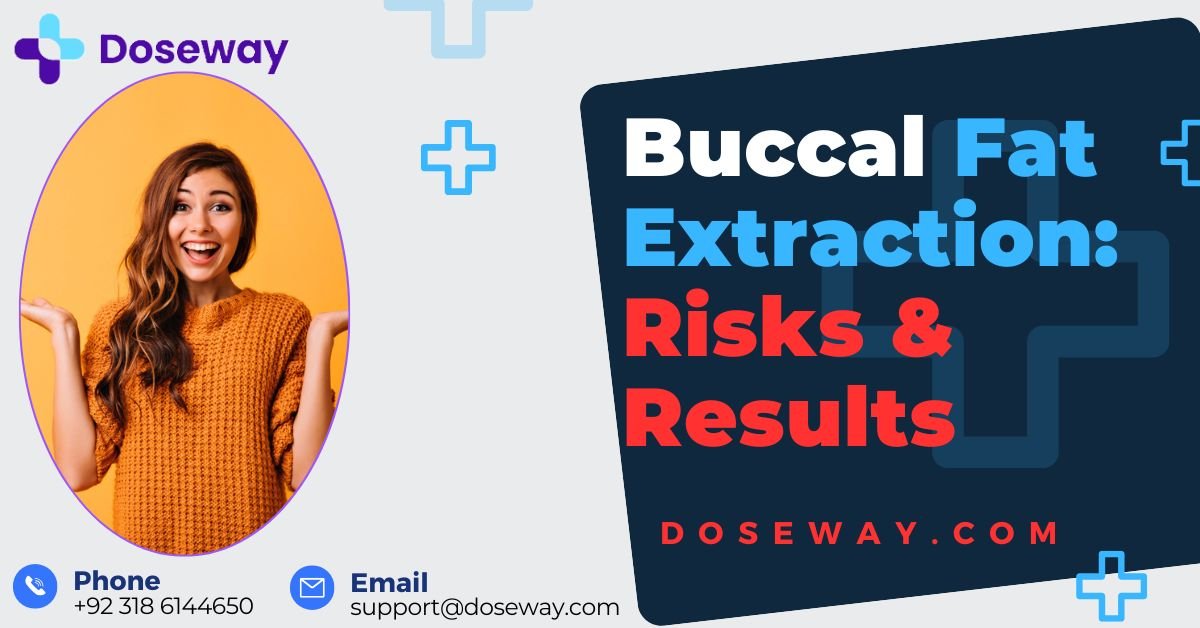
How Does Buccal Fat Removal Affect Facial Aging Long-Term?
The long-term impact of buccal fat extraction on facial aging represents a critical consideration in surgical planning. While the procedure creates immediate cheek contour enhancement, natural age-related volume loss continues over time, potentially leading to excessive hollowing in later decades. Strategic conservative removal helps balance immediate results with long-term facial harmony.
The buccal fat pad naturally diminishes with age, contributing to the hollowed appearance often seen in mature faces. Surgical removal accelerates this process, creating permanent changes that interact with natural aging patterns. Patients in their 20s and 30s may not fully appreciate how their faces will change decades later, making conservative approaches generally advisable.
Age-related considerations by decade:
✓ 20s-30s: Natural buccal fat volume present, conservative removal recommended
✓ 40s: Beginning of natural volume loss, minimal removal advised
✓ 50s+: Significant natural fat pad reduction, procedure generally not recommended
✓ Long-term projection: Simulation of future appearance based on family aging patterns
✓ Combination approaches: Buccal fat removal with fat transfer for balanced aging

What Is the Typical Recovery Timeline After Buccal Fat Extraction?
The recovery process following buccal fat removal follows a predictable pattern, though individual healing rates vary based on surgical technique, patient health factors, and adherence to postoperative instructions. Understanding the recovery stages helps patients plan appropriately and recognize normal versus concerning symptoms during the healing period.
Immediately after surgery, patients experience swelling and discomfort that peaks within the first 72 hours. The initial week involves significant facial swelling that gradually subsides over 2-3 weeks. Most social activities can resume after 10-14 days when noticeable swelling diminishes, though final results continue to evolve for several months as residual swelling resolves and tissues settle.
Detailed recovery timeline:
✓ First 24-48 hours: Maximum swelling and discomfort, liquid diet required
✓ Days 3-7: Significant swelling begins to subside, soft foods introduced
✓ Weeks 2-3: Noticeable swelling decreases by 70-80%, normal diet resumes
✓ Weeks 4-6: Residual swelling continues to resolve, final contours emerge
✓ Months 2-3: Near-final results apparent, tissues fully settled
✓ Month 6+:: Final surgical outcome stable and permanent
What Results Can Realistically Be Expected from Buccal Fat Removal?
Realistic expectations are crucial for patient satisfaction with buccal fat extraction outcomes. The procedure creates subtle to moderate enhancement of cheekbone definition rather than dramatic transformation. Results become apparent as swelling resolves, with final contours visible after 3-6 months. The changes are permanent, making careful surgical planning essential.
The amount of fat removed typically ranges from 2-5 ml per side, creating a reduction in lower cheek fullness and enhanced prominence of the zygomatic arch. Patients with round faces notice the most significant improvement, while those with square faces experience softness in the lower cheek area. The procedure works best as a refinement rather than complete facial transformation.
Realistic outcome expectations:
✓ Cheek contour enhancement: Improved definition between cheekbone and jawline
✓ Facial slimming: Reduction in lower cheek fullness creating longer facial appearance
✓ Permanent results: Fat cells do not regenerate, creating lasting changes
✓ Natural-looking outcomes: Best results appear refined rather than surgical
✓ Individual variation: Results depend on preoperative anatomy and surgical technique
✓ Complementary effects: Enhanced results when combined with other facial procedures
How Much Does Buccal Fat Removal Typically Cost?
The cost of buccal fat extraction varies significantly based on geographical location, surgeon expertise, facility fees, anesthesia costs, and surgical complexity. Understanding the cost components helps patients budget appropriately and compare quotes effectively. The procedure typically ranges from $2,000 to $5,000 when performed alone, with higher costs in major metropolitan areas and with renowned specialists.
The surgeon’s fee represents approximately 50-60% of the total cost, reflecting their training and experience. Facility and anesthesia fees comprise another significant portion, while additional costs may include preoperative tests, medications, and postoperative garments. Many practices offer financing options to make the procedure more accessible through payment plans.
Cost breakdown by component:
✓ Surgeon’s fee: $1,500-$3,000 based on experience and reputation
✓ Facility fee: $500-$1,500 for operating room and supplies
✓ Anesthesia fee: $500-$1,000 for local with sedation or general anesthesia
✓ Preoperative costs: $200-$500 for medical tests and consultations
✓ Postoperative costs: $100-$300 for medications and follow-up care
✓ Combined procedure discount: Reduced fees when performed with other surgeries
What Factors Influence the Final Cost of Buccal Fat Extraction?
Multiple variables impact the total investment required for buccal fat removal, creating significant price variation between patients and practices. Understanding these factors enables informed decision-making and appropriate financial planning. The primary cost drivers include surgeon expertise, geographical location, surgical facility type, and case complexity.
Board-certified plastic surgeons with specialized facial contouring experience typically command higher fees, reflecting their advanced training and consistent results. Geographical variation shows higher costs in metropolitan areas like New York and Los Angeles compared to smaller cities. Surgical setting also affects pricing, with hospital-based facilities generally more expensive than accredited office-based surgical suites.
Key cost influencing factors:
✓ Surgeon credentials: Board certification and specialized training increase fees
✓ Geographical location: Urban centers command 20-40% higher prices
✓ Facility type: Hospital vs. office-based surgical suite cost differences
✓ Anesthesia type: General anesthesia costs more than local with sedation
✓ Case complexity: Revision surgery or combined procedures increase costs
✓ Medical factors: Additional costs for patients with health considerations
How Does Our Buccal Fat Extraction Cost Calculator Work?
Our proprietary buccal fat removal cost calculator incorporates multiple variables to generate personalized cost estimates based on individual patient factors and preferences. The algorithm processes inputs related to anatomical considerations, surgical preferences, geographical location, and additional procedures to create accurate financial projections for surgical planning.
The calculator utilizes current market data from various regions and practice types, updated quarterly to reflect pricing trends. Users input specific details about their desired outcomes, surgeon selection criteria, and geographical preferences to receive tailored estimates. The system also provides cost comparisons between different approaches and explains value differences between pricing tiers.
Calculator input variables:
✓ Geographical region: United States, Europe, or other regions with price adjustments
✓ Surgeon experience level: Ranging from newly trained to internationally recognized experts
✓ Facility type: Hospital, surgical center, or office-based facility selection
✓ Anesthesia preference: Local with sedation versus general anesthesia options
✓ Combined procedures: Additional surgeries that affect overall costing
✓ Medical complexity: Health factors that may require additional precautions

What Do the Calculator Results Mean for Your Surgical Planning?
The cost estimate generated by our calculator provides a realistic financial framework for buccal fat removal planning, but represents a starting point rather than a definitive quote. Understanding how to interpret these results helps patients budget appropriately and communicate effectively with potential surgeons during consultations.
The estimate breakdown shows how total costs distribute across surgical fees, facility charges, anesthesia, and additional expenses. This transparency enables informed decision-making about where value may be found without compromising safety or results. The calculator also identifies potential cost-saving opportunities, such as combining procedures or selecting different anesthesia options.
Interpreting calculator results:
✓ Base surgical cost: Surgeon’s fee for the standard procedure
✓ Geographical multiplier: Adjustment based on selected region
✓ Experience premium: Additional cost for highly sought surgeons
✓ Facility differential: Cost variation between facility types
✓ Anesthesia adjustment: Price differences between anesthesia options
✓ Combined procedure savings: Potential discounts when bundling surgeries
How Does Buccal Fat Removal Compare to Non-Surgical Facial Slimming Treatments?
Non-surgical alternatives to buccal fat extraction offer varying degrees of facial contouring with less downtime and lower initial cost, though with temporary results and different mechanisms of action. Understanding these options helps patients select the most appropriate approach based on their goals, budget, and tolerance for surgery.
Injectable treatments like Botox to the masseter muscles can reduce jawline width, creating a slimmer lower facial appearance. Ultrasound and radiofrequency technologies can provide mild skin tightening and fat reduction, while Kybella injections directly destroy fat cells in the submental area. Each approach has distinct advantages and limitations compared to surgical buccal fat removal.
Comparison of facial slimming options:
✓ Buccal fat extraction: Permanent fat removal, surgical downtime, highest cost
✓ Masseter Botox: Temporary muscle reduction, minimal downtime, moderate cost
✓ Kybella injections: Fat destruction in specific areas, multiple sessions, moderate cost
✓ Ultherapy: Skin tightening, minimal results for fat reduction, moderate cost
✓ CoolSculpting: Fat reduction in treated areas, multiple sessions, moderate cost
✓ Thread lifts: Minimal lifting effect, temporary results, moderate cost
What Are the Key Considerations When Choosing a Buccal Fat Removal Surgeon?
Selecting the appropriate surgeon represents the most critical decision in the buccal fat removal process, significantly impacting both safety outcomes and aesthetic results. Key selection criteria include board certification, specific experience with facial contouring procedures, before-and-after galleries, and patient rapport. Thorough research and multiple consultations help identify the best surgical match.
Plastic surgeons certified by the American Board of Plastic Surgery or equivalent international certifications possess the comprehensive training necessary for facial anatomy and surgical safety. Surgeons who frequently perform buccal fat removal develop refined techniques and understanding of nuanced outcomes. Reviewing before-and-after photos specifically for buccal fat cases provides insight into their aesthetic approach and consistency.
Surgeon selection checklist:
✓ Board certification: Verification of appropriate surgical credentials
✓ Before-and-after gallery: Review of actual buccal fat removal cases
✓ Surgical facility accreditation: confirmation of proper safety standards
✓ Patient testimonials: Feedback from previous buccal fat patients
✓ Communication style: Comfort level with surgeon explanations and approach
✓ Revision policy: Understanding of approach to potential touch-up procedures
What Preoperative Preparations Are Necessary Before Buccal Fat Extraction?
Proper preoperative preparation optimizes surgical safety, enhances recovery efficiency, and improves final results. Preparation typically begins 2-4 weeks before surgery and involves medication adjustments, lifestyle modifications, and nutritional optimization. Following preoperative instructions carefully reduces complication risks and promotes smoother healing.
Essential preparations include discontinuing blood-thinning medications and supplements, arranging for postoperative assistance, and completing necessary medical clearances. Nutritional preparation involves increasing protein intake and hydration to support tissue repair. Smoking cessation is critically important, as nicotine significantly impairs healing and increases complication risks.
Preoperative preparation timeline:
✓ 4 weeks before: Initial consultation, surgical planning, medication review
✓ 2 weeks before: Discontinue blood thinners, begin nutritional optimization
✓ 1 week before: Finalize arrangements, fill prescriptions, prepare recovery area
✓ 48 hours before: Increase hydration, avoid alcohol, confirm transportation
✓ Day before surgery: Nothing to eat or drink after midnight, final preparations
✓ Surgery day: Arrive with clean face, comfortable clothing, necessary documents

What Does the Immediate Postoperative Period Involve After Buccal Fat Removal?
The first 24-48 hours following buccal fat extraction require careful monitoring and specific care protocols to manage initial healing. Understanding what to expect during this period reduces anxiety and promotes proper recovery behaviors. Typical experiences include swelling, tightness, mild discomfort, and dietary restrictions.
Swelling peaks around 48-72 hours postoperatively, creating a fuller facial appearance than before surgery. Pain is generally mild to moderate and well-controlled with prescribed medications. A liquid diet is necessary initially, progressing to soft foods as comfort allows. Cold compresses applied externally help manage swelling and provide comfort during the initial recovery phase.
Immediate postoperative care protocol:
✓ Pain management: Timely medication to stay ahead of discomfort
✓ Swelling control: Consistent cold compression for 20-minute intervals
✓ Oral care: Gentle rinsing with prescribed mouthwash after intake
✓ Head elevation: Maintaining 30-45 degree angle even during sleep
✓ Activity restriction: Complete rest with minimal talking and facial movement
✓ Diet management: Clear liquids advancing to soft foods as tolerated
✓ Medication schedule: Strict adherence to antibiotics and pain relievers
What Are the Potential Long-Term Effects and Satisfaction Rates of Buccal Fat Removal?
Long-term outcomes of buccal fat extraction show high patient satisfaction rates when appropriate candidates are selected and conservative techniques employed. Studies indicate approximately 85-90% satisfaction among properly selected patients, with higher satisfaction in younger patients with round face shapes and good skin elasticity. Understanding long-term implications helps set realistic expectations.
The permanent nature of buccal fat removal means results persist throughout life, interacting with natural aging processes. Most patients report maintained satisfaction with their refined facial contours years after surgery, though some express concerns about excessive hollowing as natural age-related volume loss occurs. Revision procedures to address over-resection are challenging, emphasizing the importance of conservative initial surgery.
Long-term outcome data:
✓ Patient satisfaction: 85-90% report being satisfied with permanent results
✓ Natural aging effects: Continued facial volume loss beyond surgical changes
✓ Revision rates: Approximately 5-8% seek additional contouring procedures
✓ Aging concerns: 10-15% report some concern about hollowing with maturity
✓ Combination procedures: Higher satisfaction when combined with other facial enhancements
✓ Psychological impact: Improved self-confidence and body image reported by majority
How Does Buccal Fat Removal Complement Other Facial Procedures?
Buccal fat extraction often performs best as part of a comprehensive facial enhancement plan rather than as an isolated procedure. Combining buccal fat removal with complementary surgeries can create more harmonious facial balance and address multiple concerns simultaneously. Understanding these combinations helps patients consider comprehensive approaches to facial rejuvenation.
Common combination procedures include chin augmentation to balance reduced cheek fullness, liposuction of the jawline and neck to enhance definition, or fat transfer to the midface to restore volume in aging patients. Rhinoplasty also pairs well with buccal fat removal by creating better facial proportion between features. Each combination requires careful planning to maintain facial harmony.
Popular procedure combinations:
✓ Buccal fat removal + chin augmentation: Enhanced facial balance and projection
✓ Buccal fat removal + neck liposuction: Comprehensive lower facial contouring
✓ Buccal fat removal + rhinoplasty: Improved facial feature proportionality
✓ Buccal fat removal + blepharoplasty: Comprehensive facial rejuvenation
✓ Buccal fat removal + fat transfer: Volume redistribution for aging patients
✓ Buccal fat removal + facelift: Comprehensive facial repositioning and contouring
What Are the Most Important Questions to Ask During a Buccal Fat Removal Consultation?
The consultation process provides critical opportunity to evaluate a surgeon’s approach, experience, and compatibility with your goals. Preparing specific questions ensures you gather necessary information to make an informed decision. Key areas to address include surgeon experience, technique details, complication management, and realistic outcomes.
Asking to see multiple before-and-after photos of actual buccal fat patients helps assess consistency and aesthetic approach. Inquiring about revision policies provides understanding of how potential touch-ups are handled. Discussion of specific techniques demonstrates the surgeon’s thoughtful approach to individualized planning rather than a one-size-fits-all methodology.
Essential consultation questions:
✓ How many buccal fat removal procedures do you perform annually?
✓ What is your specific technique for accessing and removing the fat pad?
✓ What percentage of your patients require revision procedures?
✓ Can you show me before-and-after photos of patients with similar facial structure?
✓ What is your policy regarding touch-up procedures if needed?
✓ What specific measures do you take to prevent over-resection?
✓ How do you individualize the amount of fat removed for each patient?
✓ What are the most common complications you encounter with this procedure?

Frequently Asked Questions About Buccal Fat Extraction
Is buccal fat removal permanent?
Yes, buccal fat removal creates permanent results because the fat cells removed do not regenerate. The procedure permanently alters facial architecture by reducing volume in the lower cheeks. However, natural aging continues, with overall facial fat loss over time potentially creating more hollowing than initially anticipated.
What is the right age for buccal fat removal?
The ideal age range for buccal fat extraction is typically between 25-40 years. Patients in their early 20s may not have fully developed facial structure, while patients over 40 may experience natural volume loss that makes the procedure less advisable. The timing should balance desired contour with long-term aging considerations.
Can buccal fat removal make you look older?
Over-resection of buccal fat pads can create premature aging by causing excessive hollowing in the cheeks. When performed conservatively on appropriate candidates, the procedure typically creates a more refined rather than aged appearance. Strategic removal that maintains some natural fullness provides the most balanced long-term results.
Does buccal fat removal affect facial expressions?
When properly performed, buccal fat removal should not impact facial expressions or muscle function. The surgery occurs deep to the facial muscles and avoids nerve injury. Temporary stiffness or tightness may occur during healing, but normal expression returns as swelling resolves and tissues adapt.
Can buccal fat grow back after removal?
The specific fat cells removed during buccal fat extraction do not regenerate, creating permanent reduction in that specific fat pad. However, weight gain can cause enlargement of remaining fat cells in the area, and overall facial fat distribution changes with age and weight fluctuations.
What happens to buccal fat as we age?
The buccal fat pad naturally diminishes with age, contributing to facial hollowing in later decades. This natural volume loss begins gradually in the 30s and becomes more significant in the 50s and beyond. Surgical removal accelerates this specific volume loss, which must be considered in surgical planning.
Is buccal fat removal worth it?
For appropriate candidates with round facial shapes and stable weight, buccal fat removal typically provides high satisfaction rates. The permanent enhancement of cheekbone definition creates significant improvement in facial contours. Patients should carefully consider the permanent nature of the results and potential long-term aging effects.
Recommended Affiliate Products/Brands
- Skincare Recovery Products: Biocorneum Advanced Scar Treatment, Embrace Active Scar Defense, Mederma Scar Gel Plus
- Post-Surgical Supplements: Vital Nutrients Surgical Support, Ortho Molecular Products Inflammatone, Pure Encapsulations Nutrient 950
- Compression Garments: Marena Recovery Bra, Design Veronique Face Bra, Venusian Medical Garments
- Surgical Preparation Kits: Healthy Pops Pre-Surgery Optimization System, Presurgical Boost Nutrition Shakes
- Medical-Grade Skincare: SkinMedica Post-Procedure Repair Kit, Obagi Medical Rosaclear, EltaMD UV Clear Broad-Spectrum SPF 46
- Oral Care Products: Peridex Prescription Mouthwash, Colgate Peroxyl Mouth Sore Rinse, Waterpik Cordless Water Flosser
- Nutritional Support: Orgain Organic Protein Shakes, Kate Farms Standard Nutrition Shake, Isopure Zero Carb Protein Powder

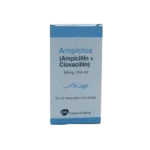
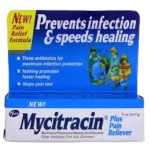
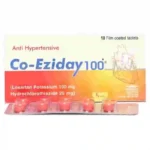
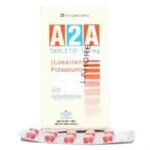

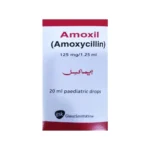
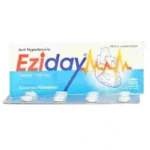
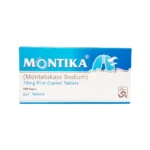
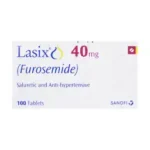


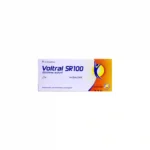



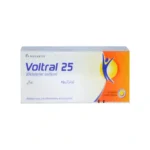
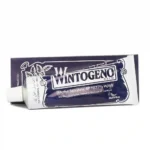

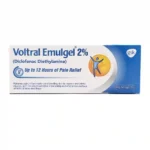





Add a Comment